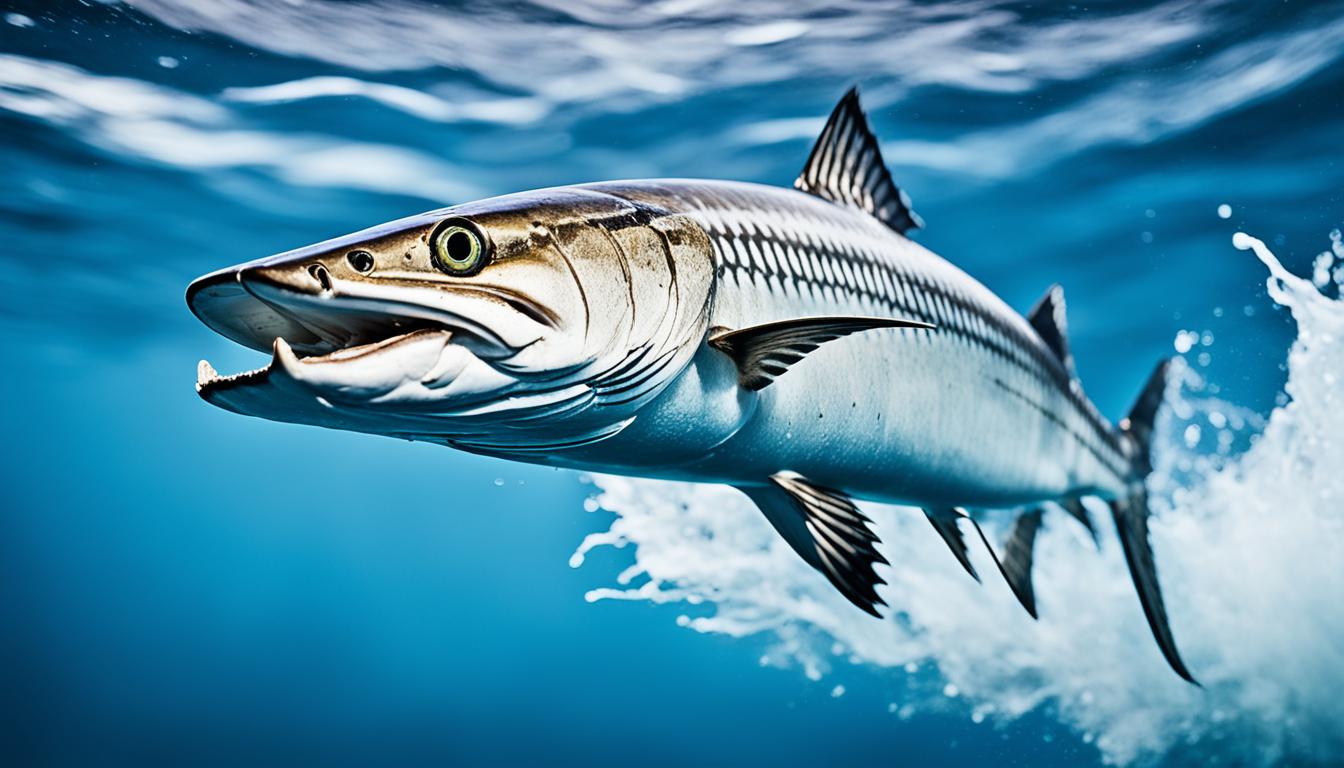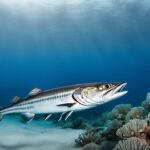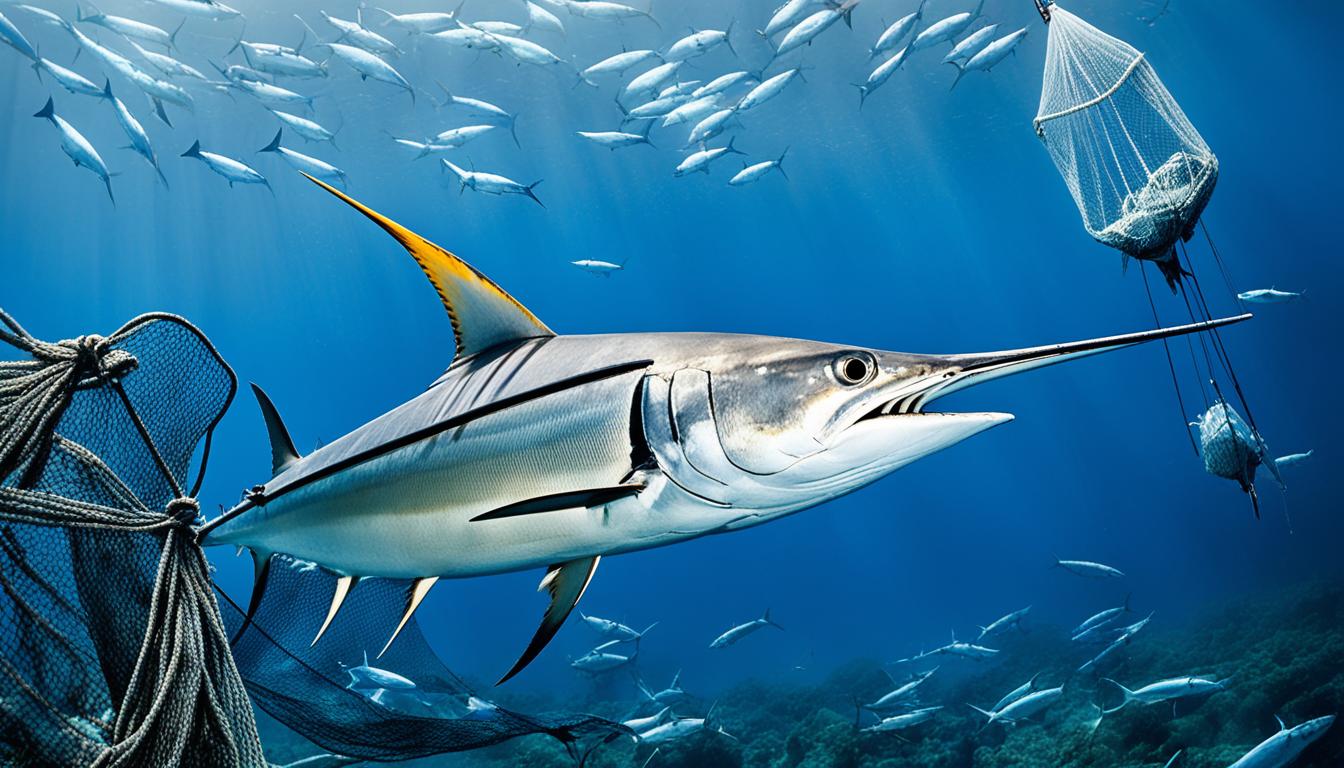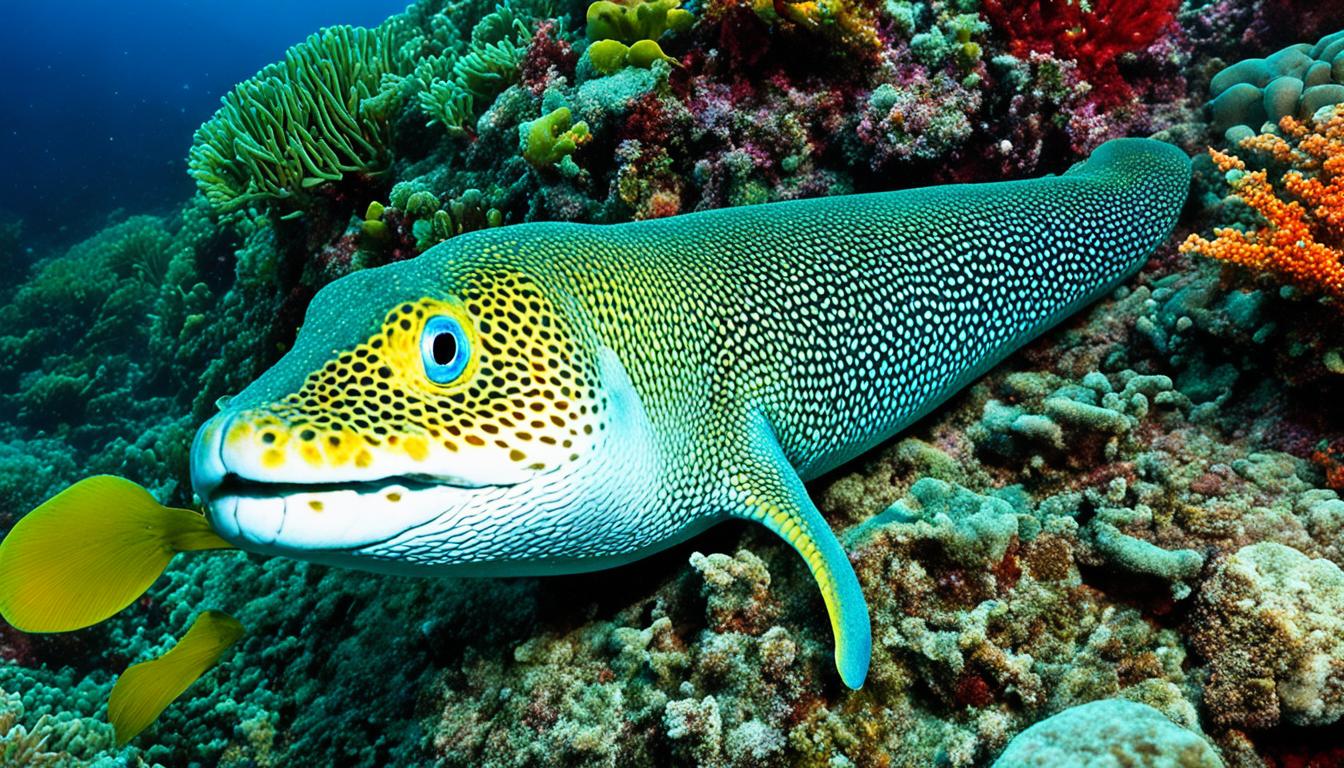Ever wondered how fast barracudas can swim? These fish, known as Sphyraena, are incredibly agile and swift in the water. Their streamlined bodies make them move quickly, catching the interest of anglers and marine biology fans. Let’s dive into how fast they can swim and what affects their speed.
Barracudas are known for their speed, reaching up to 25 miles per hour. This makes them some of the fastest fish in the ocean. Their ability to swim so fast is crucial for catching prey and avoiding predators.
But what makes barracudas so fast? Let’s explore the factors that contribute to their speed.
Key Takeaways:
- Barracudas can swim at speeds of up to 25 miles per hour.
- Their streamlined bodies help them achieve high speeds.
- Understanding barracuda swimming speed is important for their survival.
- Environmental factors influence their swimming speed.
- Barracudas are considered one of the ocean’s elite predators.
Understanding Barracuda Swimming Speed
Barracudas are fascinating creatures known for their speed in the water. Their ability to swim fast is key to their hunting success. This speed comes from their unique body shape and muscle structure.
What determines barracuda swim speed?
Several factors affect a barracuda’s swim speed. These include their body shape, muscle structure, and how efficiently they use energy. Each of these plays a big part in their swimming speed and efficiency.
Aerodynamic body shape
Their sleek, aerodynamic body shape helps them swim fast. This shape cuts through water with less resistance. It lets them speed up quickly and make sharp turns to catch prey.
This design is perfect for a predator that needs to be fast. Speed is crucial for survival in their world.
Muscle structure and energy efficiency
Barracudas have muscles made for quick bursts of speed. These muscles help them sprint after food. They also use energy efficiently, which is key for short, intense hunts.
This mix of strong muscles and efficient energy use makes them agile hunters. They can chase down prey with ease.
| Feature | Description |
|---|---|
| Aerodynamic Body Shape | Elongated and tubular, minimizing water resistance |
| Muscle Structure | Equipped for explosive speed and rapid acceleration |
| Energy Efficiency | Allows sustaining high speeds during hunts |
How fast can barracudas swim?
Barracudas are incredibly fast swimmers, which helps them in the ocean’s competitive world. They are not just quick but also very efficient. This makes their swimming skills a key part of their survival.
Top speeds recorded in the wild
In their natural setting, barracudas can swim at amazing speeds. They can go from 35 mph (56 km/h) to 36 mph (58 kph). This makes them some of the fastest fish in the sea. It shows their athletic ability and how they adapt for hunting.
Comparison with other marine predators
It’s important to see how fast barracudas swim compared to other sea creatures. Here’s a look at their speed versus other ocean animals:
| Marine Predator | Top Speed (mph) | Top Speed (km/h) |
|---|---|---|
| Barracuda | 36 | 58 |
| Sailfish | 68 | 110 |
| Yellowfin Tuna | 50 | 80 |
| Mako Shark | 45 | 72 |
This comparison shows how fast barracudas swim compared to other top predators like the sailfish and yellowfin tuna. Their speed and agility improve their hunting and secure their important role in the ocean’s food chain.
Distinct Features of the Great Barracuda
The great barracuda is a fascinating marine predator. It is known for its striking look and amazing adaptations. These help it survive in the ocean. Its body shape, sharp teeth, and bright colors have special roles in hunting.
Physical characteristics
The great barracuda has unique physical traits that set it apart. Key features include:
- Coloration: A shiny blue-gray color helps it blend in with the ocean.
- Body Shape: Its elongated, torpedo-like body helps it move fast and hunt better.
- Teeth: Sharp, fang-like teeth are perfect for catching slippery prey.
These features are not just for looks. They help the fish ambush and catch prey effectively.
Biological adaptations for speed
Biological adaptations help the great barracuda be fast. Key elements include:
- Powerful caudal fin: This fin creates strong thrust for quick acceleration.
- Specialized musculature: Fast-twitch muscle fibers give the power for quick speed.
- Highly efficient body mechanics: Its streamlined shape cuts down on resistance, making it faster.
These adaptations show how the barracuda stays a top predator in the ocean.
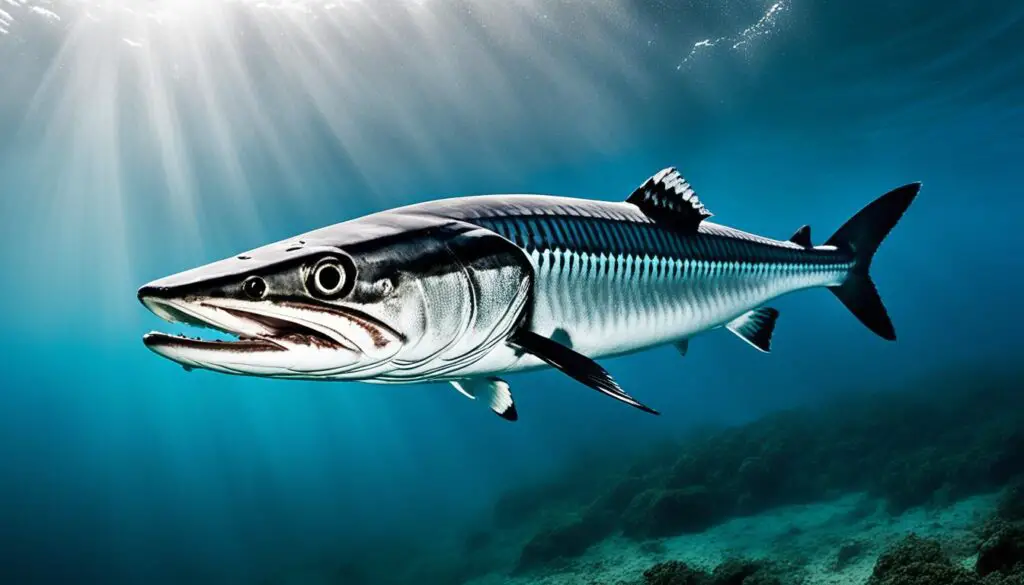
The Hunting Techniques of Barracudas
Barracudas are known for their amazing hunting skills. They use stealth and speed to catch their prey. Their hunting ways are really interesting, showing how they use ambush tactics to get more food.
Ambush predator strategies
Barracudas are great at ambushing their prey. They use their long, sleek bodies to hide in the water. They stay still and blend in, waiting for fish to get close. Then, they attack fast, using their speed to catch their prey off guard.
Acceleration patterns and chase behavior
Barracudas are also skilled at chasing their prey. When they start chasing, they show off their speed. They can go very fast in just a few seconds, catching up to fish quickly.
They also turn sharply and are very agile during the chase. This lets them change their approach and increase their chances of catching their prey. It shows how well they have adapted to be top predators.
Effects of Environmental Factors on Barracuda Speed
Many things in the environment can change how fast barracudas swim. Knowing about these factors helps us understand these amazing fish better.
Water temperature is key to how fast barracudas swim. When it’s warm, they swim faster because their metabolism speeds up. But in cold water, they swim slower and use less energy.
Currents in the water can help or hurt their swimming. Strong currents let barracudas swim easily and save energy. But in rough waters, they have to work harder to stay fast.
Where barracudas live also affects their speed. In the open ocean, they can swim very fast. But in places like coral reefs, they have to swim slower and be more careful.
| Environmental Factor | Influence on Speed |
|---|---|
| Water Temperature | Warmer water increases metabolic rates, boosting swimming efficiency. |
| Current Strength | Strong currents can aid in energy conservation, while turbulent waters require more effort. |
| Habitat Type | Open oceans facilitate higher speeds than complex habitats like coral reefs. |
Conclusion
In this summary, we looked at how fast barracudas can swim. These fish have bodies made for speed and muscles that help them move quickly. They are among the fastest fish in the sea, playing a big role in the ocean’s balance.
Barracudas use their speed to catch prey by ambushing them. They can speed up quickly to chase down their food. This shows how important their speed is for their survival and success in the ocean.
Learning about barracuda speed helps us understand marine life better. It also shows why we need to protect these amazing creatures. By understanding their speed and its role in nature, we can work to keep our oceans healthy for them.

